The subtleties of pruning weeping willow

Weeping willow is a beautiful tree that needs proper care. It becomes especially bright and elegant only after correctly pruning. A professional "haircut" can make the willow very unusual and attractive. In this article, we will learn all about the intricacies of pruning this beautiful tree.

Why do you need pruning?
Before considering all the nuances and features of pruning a weeping willow, it is advisable to answer one of the most important questions: why is this procedure needed, and what is the point in it?
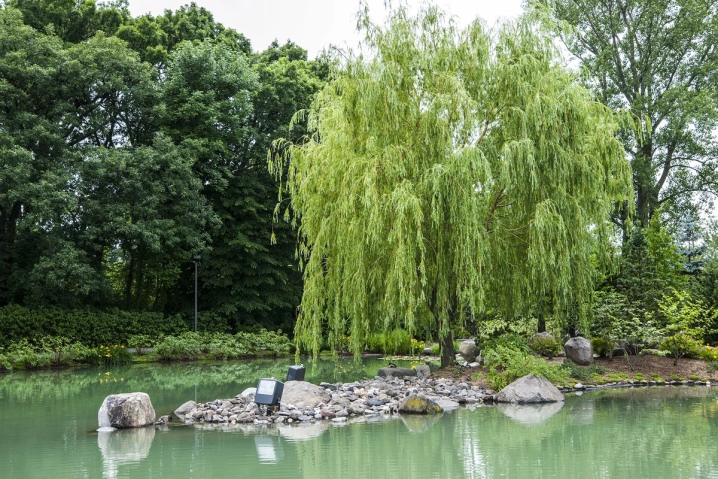
Specialists who are engaged in professional pruning of such trees are called arborists.
These people love to joke about their work, using various names for "human" haircuts, for example, "gavroche" or bob. There is even such a pruning, which is called "half-box", when a young willow with shoots about 1 meter long is trimmed to get a 20-centimeter "hedgehog". Most often, such procedures are resorted to in the spring season, when the tree has not yet had time to fully awaken from the winter frosts, but the movement of the juices has already begun.
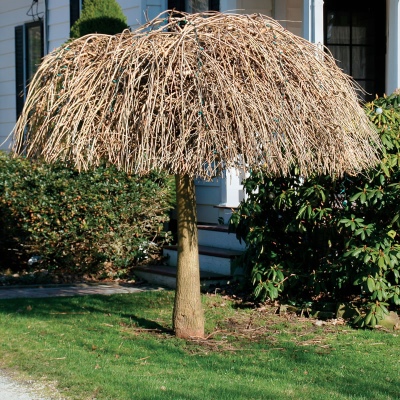
It is believed that the weeping willow should not be touched for the first 4 years of life.
This is because it is in the first years that certain growth trends, the level of viability, as well as the results of the influence of external "stimuli" on the young tree are determined.
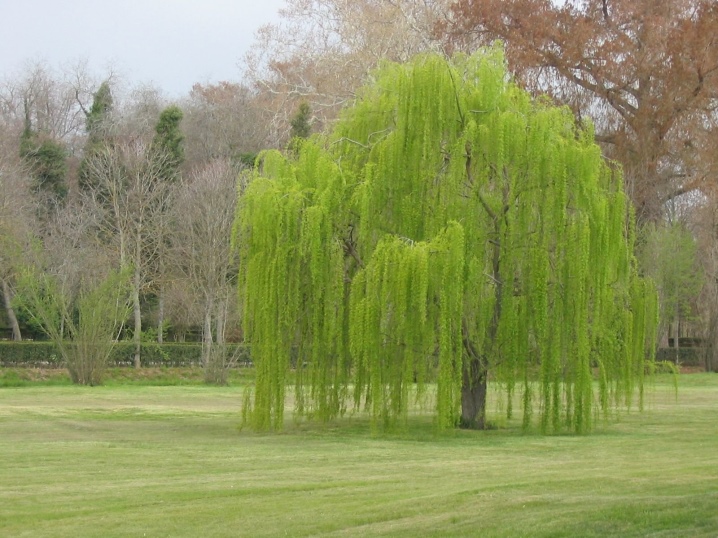
After the obligatory pruning in the spring season, it is necessary to observe the vegetation of the willow. In some trees, active and rapid growth of branches continues after spring procedures. In this case, you need to tackle the secateurs again, but already in the summer season. In the normal state, it is customary to cut off exclusively dead or too weak, practically unviable shoots in the trees under consideration in summer.
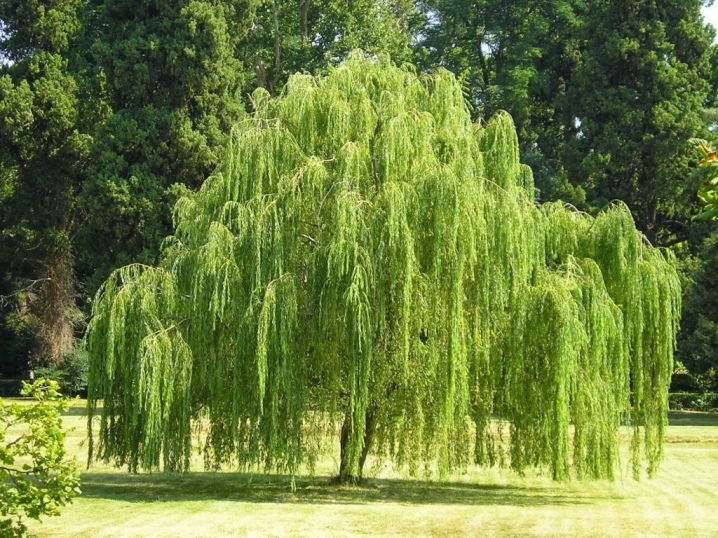
Correct pruning of weeping willow allows you to detect certain diseases that have arisen in this tree in time.
A trimmed willow tree will have a dense, but beautiful and neat bark that is free of specks or dots. It will remain green in the first years of life, and then over time it begins to acquire characteristic shades of brown. In park areas, species are planted that require a separate type of haircut and pruning.
When should you start?
As mentioned above, it is not recommended to prune or trim a weeping willow before it "turns" 4 years old. Usually, the first years of life, this tree can grow freely until it reaches a height of 0.8-0.9 m.
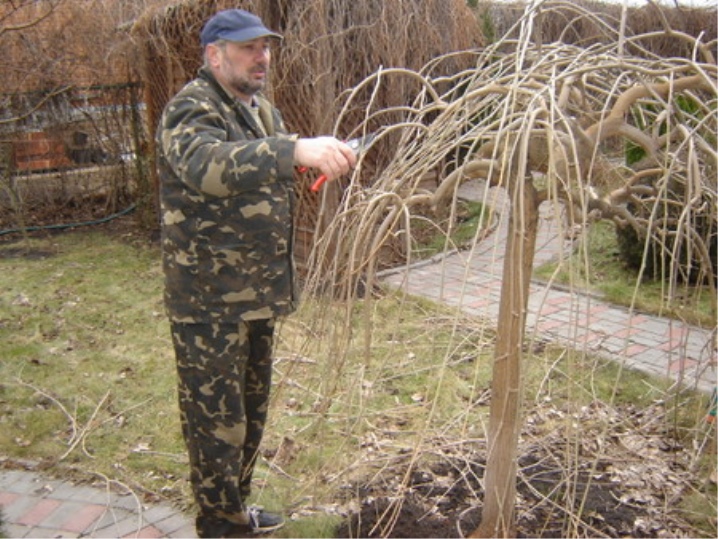
For the first time, the tips of willow branches should be shortened in early spring.
You don't need to cut a lot. It is enough to remove 20-30 extra centimeters. Then the haircut can be duplicated in the summer. This should be done from year to year. Gradually, the crown of a weeping willow will become more and more strong and dense.
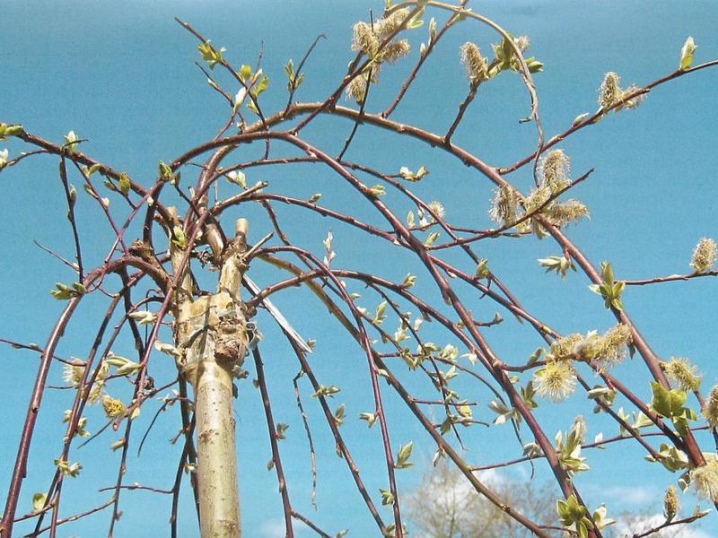
How to form correctly?
Willow pruning is not a difficult process, but it must be carried out in accordance with certain rules. Only a tree that is properly pruned and trimmed according to the appropriate scheme will be healthy and beautiful. It is necessary to take into account the fact that the very process of forming the tree in question takes a lot of time.
The final attractive shape of this tree is achieved in about 8-10 years, and this is a long time.
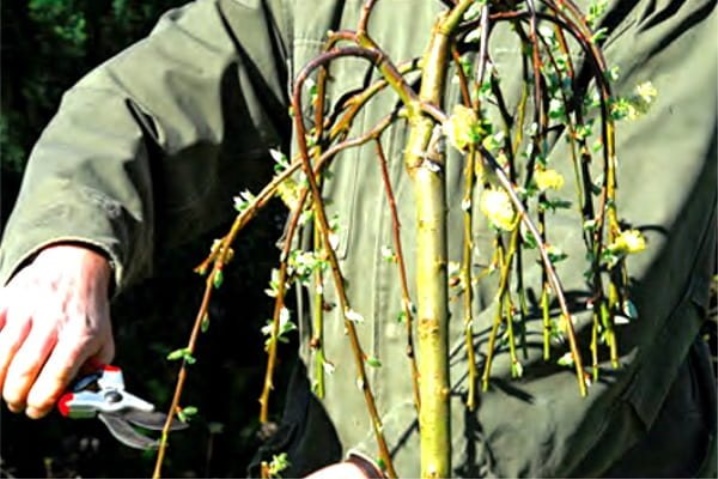
In order to correctly form a beautiful willow, you need to bend its branches as carefully and carefully as possible in the right direction. For such actions, you will need to use a rope, as well as a stiff wire. The latter will need to be bent in the direction of the bend of the tree branch, and then securely tied with a rope.
The branches must be fixed in accordance with the correct, desired direction. Fixation should be done without undue zeal and rough movements. If you do not work with the branches as carefully as possible, then you can seriously harm the willow - break them or tear off the bark.
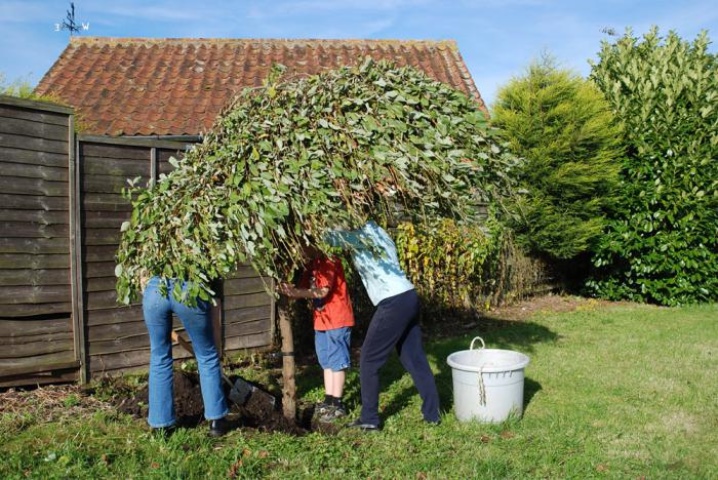
The installed fixation can be safely removed when the branches become stiff and take the correct stationary position, which was planned by a person. In most cases, this happens closer to the autumn season, if a person was engaged in the formation of a weeping willow in the spring. For the wintering of such a tree, it is recommended to use a rope, since the cold wire can seriously injure the willow bark.
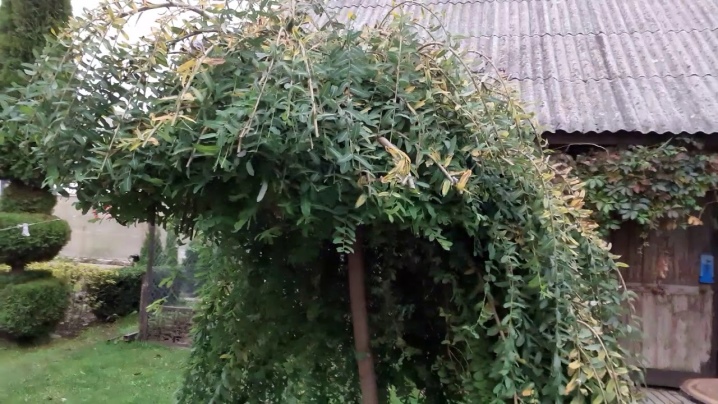
The tree in question can also be formed on a trunk. The trunk is called the trunk from the roots to the first branches. If the stem is tall, then the branches are grafted from a tree, which is characterized by a corresponding weeping shape.
But one must remember that the bole almost does not stretch upward, but "grows" only in breadth.

There is another method of forming a weeping willow, which is called a candelabrum. In accordance with this method, pruning is carried out in the spring. At this moment, the buds have not yet begun to bloom, on each of the branches in the bend area, the upper bud is removed, and the tip of the branch, which is slightly lower, is also cut off. From the upper bud, which is still in place, a new shoot soon begins to grow. At first, it grows upward, but after a while everything changes, and the shoot begins to "look" downward. Thus, a kind of candelabrum is formed, and the crown of the weeping willow also expands.
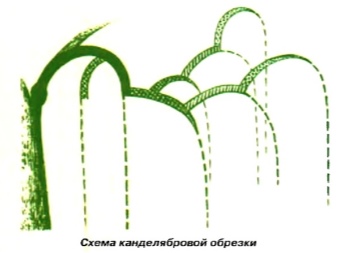

Crown care after cutting
It is not enough to properly trim and trim the weeping willow. Such actions cannot be neglected if you do not want to harm a beautiful tree.
It will need to be properly looked after after the haircut procedure.
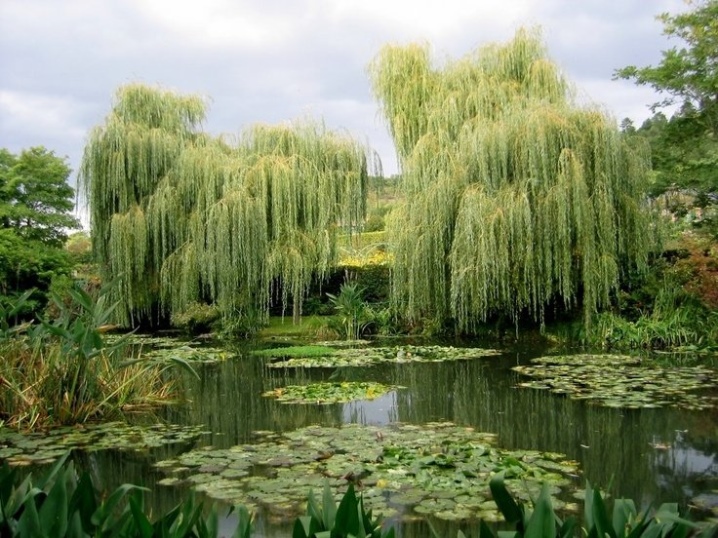
Let's consider in detail how to properly care for the crown of a weeping willow after a haircut.
- In order to effectively stimulate the active growth of the crown of the tree, in the first years it will be necessary to cut off absolutely all young shoots shortly (from 15 to 20 cm). At the ends of the shoots, the upper buds must be left.
- All shoots that develop on the line below the vaccination must also be removed in time.
- All apical buds will need to be removed during the coming summer. These actions will provoke the active growth of lateral buds, for which the crown will be as thick and elegant as possible.
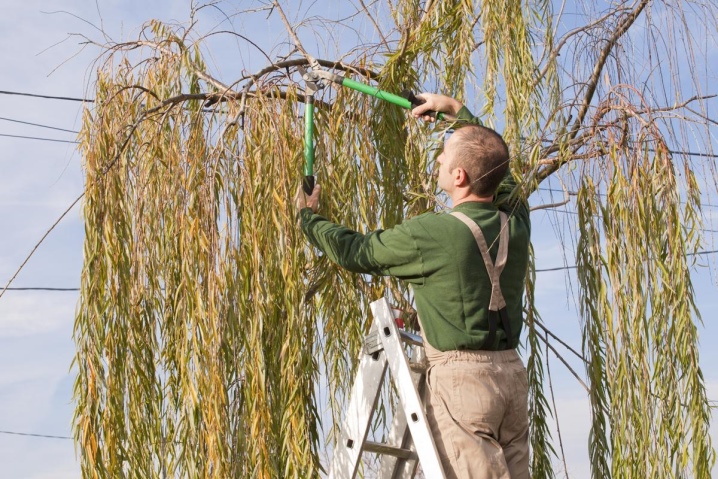
Helpful hints and tips
Weeping willow is a tree that needs to be looked after properly.
Trimming and trimming this green beauty requires certain knowledge and skills, as well as maximum accuracy and care.
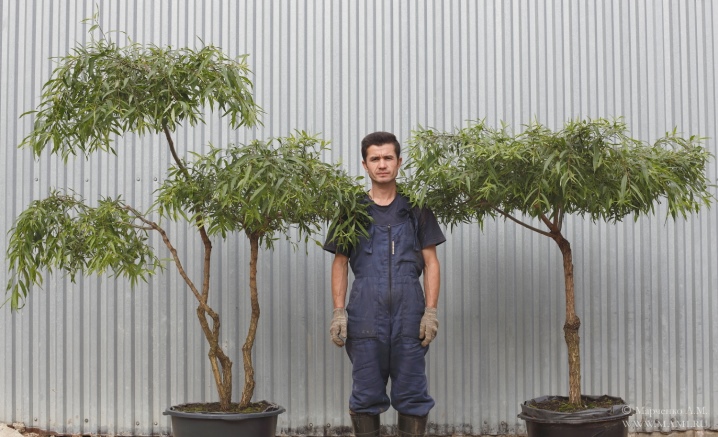
Here are some helpful tips for pruning this beautiful tree.
- If we are talking about an adult weeping willow, then it is allowed to cut it only after the flowering period. In this case, the shoots must be shortened by about 2/3 of their original length. Due to such manipulations, the tree begins to branch very well in the future.
- If you plan to plant a willow in your area, you need to remember that it is a light-loving tree. There are no special requirements for the soil, which indicates the unpretentiousness of the green beauty in question.
- Willow branches are very flexible and flexible, so working with them is very easy and simple. Due to this, the formation is quick and hassle-free. However, you need to act at each stage as gently and carefully as possible. It is very important not to harm the weeping willow, so as not to undermine its health.
- Sanitary pruning of such a tree must be done carefully. Having made a cut of a specific branch, it should be carefully and gradually lowering the ground. You can use the ropes and lower the cuttings with them.
- It so happens that a person did not have time to process the tree, or postponed this matter for later, which is why a very strong branch was formed on the crowns. In such cases, it is recommended to contact a professional who will correct the situation. Just 1 visit of a specialist is enough. If a similar problem repeats itself in a few years, it will be much easier to uproot the old tree and plant a new one in its place.
- Weeping willow should not grow in full shade conditions. In such an environment, the tree can practically stop growing. Even in a natural environment, for example, in a dense forest, it will not be possible to meet a willow growing in the shade.
- For pruning and shearing weeping willows, you must use specialized gardening tools. Pruners and other devices must be sharp and strong enough.
- Leaves that have fallen from the branches of a willow cannot be left directly under it. Willow foliage contains special tannins that can have a very bad effect on tree growth. It is very important to monitor this so as not to harm the weeping willow.
- You can trim willow on your own, relying on a specific scheme of actions and step-by-step instructions. If you are afraid to engage in such procedures or are worried that you will harm the tree, then it is better not to risk it and turn to specialists. Today there are many organizations and professionals offering their services for pruning and shearing weeping willow.
The subtleties of pruning a weeping willow in the video below.



































































The comment was sent successfully.